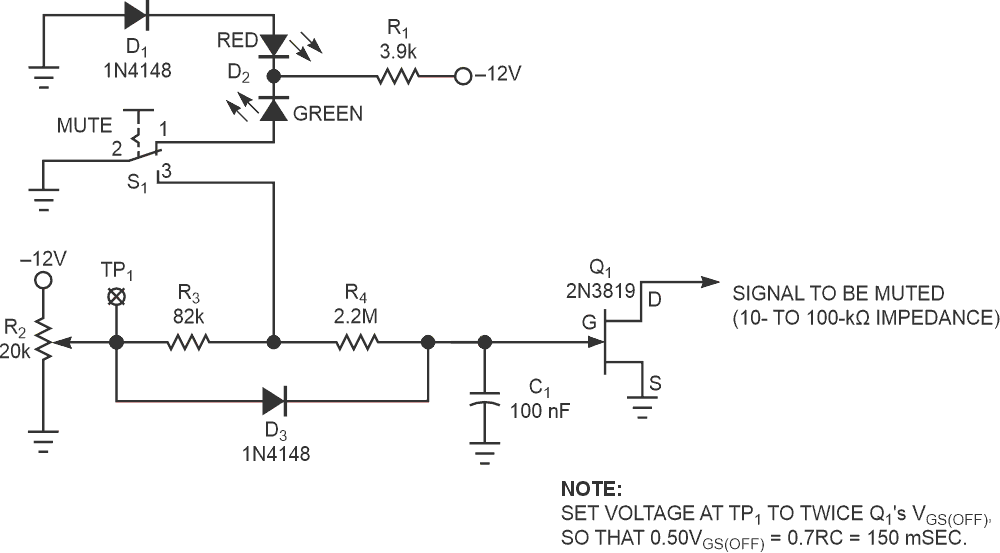The circuit in Figure 1 adds a soft muting switch with power-up/power-down muting to a line-level audio circuit. R4, C1, and JFET Q1 quietly ground a signal in 100 to 200 msec when you close S1 or release it when you open S1. Potentiometer R2, set to twice Q1’s cutoff voltage, makes the on/off transition times roughly equal. R2 and D3 quickly discharge C1 and mute the signal during power-down.
 |
|
| Figure 1. | This simple circuit provides soft muting for line-level audio circuits. |
For this process to work, the signal path should remain stable to below roughly one-third the normal supply voltages – below ±4 V in this example. Q1 can then finish muting. Making Q1 a more tightly defined PN4392 can soften this requirement and allow muting of lower impedance signals. R3 unloads S1 from R2, so that D3 does not shorten the earlier transition times. S1’s normally closed contact, resistor R1, and dual-LED D2 add an indicator light. D1 raises the red LED's on-state threshold to indicate green when muting is off. Replacing D1 with a short circuit causes the red LED to light.
This scheme makes a more expensive DPDT (double-pole, double-throw) switch unnecessary, provides uninterrupted light as S1 switches, and reduces the LED-current change for less noise (references 1 and 2).
References
- Linkwitz, SJ, “Loudspeaker System Design,” Wireless World, Volume 84, June 1978, pg 67.
- Self, D, “Inside Mixers,” Wireless World, Volume 97, April 1991, pg 280.